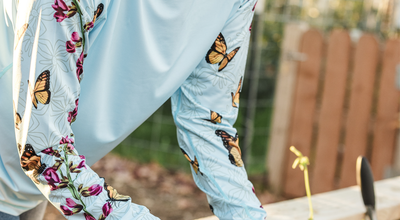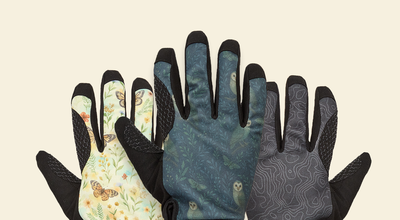Expert Gardening with Gary Bachman: A Horticulturist's Guide to Growing from Seeds
With the first day of fall on its way, it’s as good a time as spring to turn those seeds you’ve been sitting on into yielding plants. Sometimes, gardening can be a finicky process. And with time sensitivity being a significant factor in the success of your harvest, it’s good to stay ahead of the curve when it comes to fall gardening. So to make sure we start things off right, we got in touch with Gary Bachman, Professor of Horticulture, at Mississippi State University over the summer to get his hottest takes on starting seeds for cooler part of the year.
First things first, you’ve got to pick your future produce!
Professor Bachman recommends using a catalog to see what seeds are available and to order in time to get things growing.
He reminded us to consider the size of the seed in relation to how long it’ll take to start in the ground.
For planting all times of year:
Large-seeded varieties, like corn, beans, squash, and cucumbers, can be directly sowed into the ground once the weather is warm enough.
Other popular vegetables like tomatoes, peppers, and eggplants—the smaller seeds—take a little longer, so it’s best they’re not directly seeded. These need to be started indoors and transplanted once they're big enough and the timing is right.
6 Steps to Starting Your Vegetable Seeds
1. Timing your seeds is everything
High-quality produce grown at home comes from sufficient planning. The professor recommends using the Old Farmers’ Almanac as a resource to determine your local frost dates by zip code.
Now that you know your frost date, you can determine the dates to sow your seeds using the Seed Startling Calculator from Johnny’s Seed.
Side-note: almanacs and seed packets tell when specific plant varietals should be planted, so look out for that.
2. Choosing containers for smaller seeds
Next, you’ll need some small containers. These can be anything from repurposed yogurt cups or plastic clamshells (as long as they’re 2-3 inches deep) to reused
packs from the garden center. Peat pots are another excellent option. These allow you to plant the container and all when the time is right.
One important thing to keep in mind is humidity. This will need to be maintained while the seeds germinate. Clear and plastic dome work well for this, keeping things not too moist and not too dry.
And if a DYI container and tray setup isn’t your thing, there’s always the local garden center to grab complete seed starting kits.
3. Choosing and preparing your soil
Now for one of the most critical factors: your potting mix. There are a couple of ways to go with this. Professor Bachman recommends either a germination mix or a high quality professional potting mix, which any local independent garden center will carry. He does not recommend using garden soil or compost when starting seeds indoors.
4. Getting your temperature right
Consider using a germination heat mat with a thermostat to keep the bottom of your containers at the optimal temperature of 78 degrees Fahrenheit. Tomatoes, peppers and eggplants, and other warm-season vegetables will germinate uniformly with a warmer potting mix. These mats are inexpensive and easily obtainable.
5. Light!
Light will be a critical factor in the success of seedlings grown indoors. The Professor recommends using 4-foot full spectra shop lights—an inexpensive option. Keeping these lights about 6-inches away from the growing seedlings is crucial to their success.
Side-note: setting up a timer for lights can be a literal lifesaver for your plants. Seedlings need darkness for rest.
6. Tag ‘em!
One last but essential tip: plant tags. It is unlikely that even the sharpest memory will recall the names of the seedlings growing. And these tags can be used throughout the plant's growth, even after transferring them to the pot or garden bed.
Now that your seeds have sprouted and formed roots, another thing to keep in mind is transitioning seedlings outside. The protected habitat of the indoor container is a lot different than being outdoors with the elements. Gradually acclimatizing is critical to the success of moving those indoor-sown seeds into the garden. This process is called “hardening off,” and rightfully so, this could be the trickiest phase of your young seedling’s life. Just take the plants out into the wind and direct sun for short bouts of a few hours or less during the last week of their time indoors.
Starting a garden from seeds is not only the most economically feasible way to get your greens, but it’s a rewarding process. A major takeaway from Professor Bachman’s approach is that planting takes planning. So don’t get caught in the weeds this fall; jump on this prime opportunity to start your seeds today.












